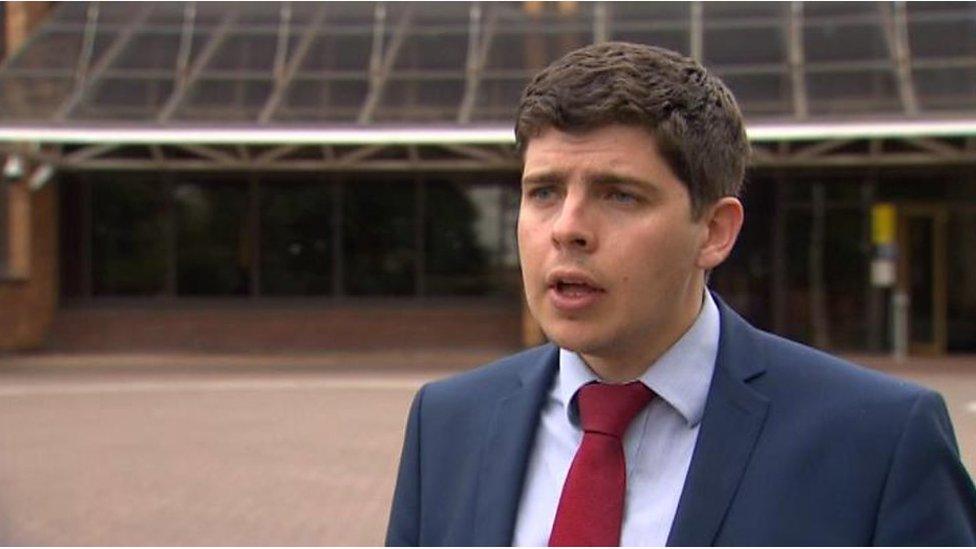Cardiff church collapse: Jeffrey Plevey named as victim
- Published

Jeffrey Joseph Plevey was working on the site of the church when it collapsed on Tuesday
Police have named the man who died after a derelict church collapsed in Cardiff as Jeffrey Joseph Plevey.
Rescue teams recovered the 55-year-old's body which was trapped under a pile of rubble.
Mr Plevey, from Cardiff, was working on the Splott site when the under-demolition church crumbled at about 14:50 BST on Tuesday.
His family said he was a hard working man who was the "life and soul of any gathering".
Colin Champ, president of Wenvoe Castle Golf Club, where Mr Plevey was a member, said there is a "sombre mood" and he was "well liked" by everyone.
Colin Champ said Jeffrey Plevey's golf club was "his life"
Two others escaped with minor injuries following the incident near the main south Wales to London railway line.
South Wales Police Det Insp Ian Bourne said: "Our aim now, together with the Health and Safety Executive, is to carry out a robust investigation and establish the cause of this tragic incident."
A report for Cardiff council in June 2016 warned the building was a "dangerous structure" at risk of "imminent collapse".
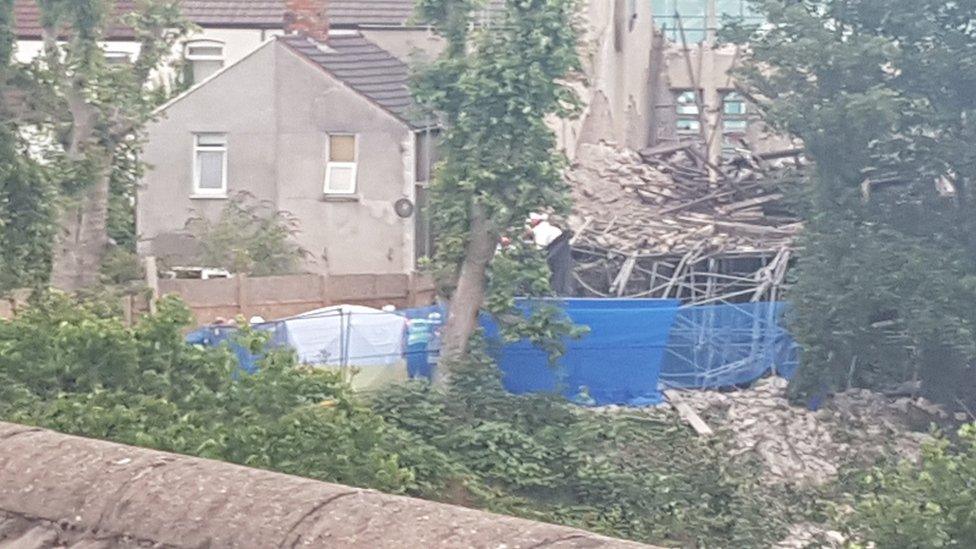
Firefighters, rescue dogs and a drone had been searching for Mr Plevey

Photos in the 2016 report showed it had "partially collapsed"
Report authors Bruton Knowles warned part of the building close to the railway line was unstable and needed to be stabilised or it may "fall" and damage the tracks.
The report said: "In our opinion, the building may be deemed as a dangerous structure. In consideration of the close proximity of the railway line."
The structural survey was undertaken for Network Rail ahead of work to replace a bridge nearby, as part of rail upgrades.
But Cardiff council said that while the report highlighted the works could affect the rear of the building - known as the Citadel - close to the railway lines, the sides of the building were found to be in a good structural condition and were not deemed a risk to the public.
A spokesman said in August 2016 the council had met with the rail authority following the report to discuss how to keep the building safe during the works.
It was agreed the owner of the church would seal off the building to stop members of the public accessing it during the works - he subsequently applied for permission to demolish the building, which was granted in November 2016.
A spokesman said: "Responsibility for the demolition lies with the owner and or contractor/s hired to take down the building."
"Cardiff council would like to take this opportunity to offer its sincere condolences to the family of the deceased man and everyone affected by the incident on Tuesday."
Cardiff council leader Huw Thomas said questions over the state of the church must be asked
Jeff Davies from Network Rail said: "We have a dedicated team whose responsibility it is to protect the railway from the activities of outside and third parties.
"In Splott our team has been supporting the emergency services as they carry out their work and we are fully cooperating with the ongoing Health and Safety Executive and Cardiff council investigation."
Cardiff demolition firm Young Contractors, which has been working on the derelict church for about three weeks, confirmed none of its staff were on the site at the time.
Stephen Doughty, MP for Cardiff South and Penarth, said on Twitter, external "questions must be asked".
Firefighters, rescue dogs and a drone had been searching for the man who was found on Tuesday between 20:00 and 21:00.
Splott Road is still closed in both directions following the church collapse while engineers make the structure safe and investigations continue. Closures also affect Pearl Street and Agate Street.
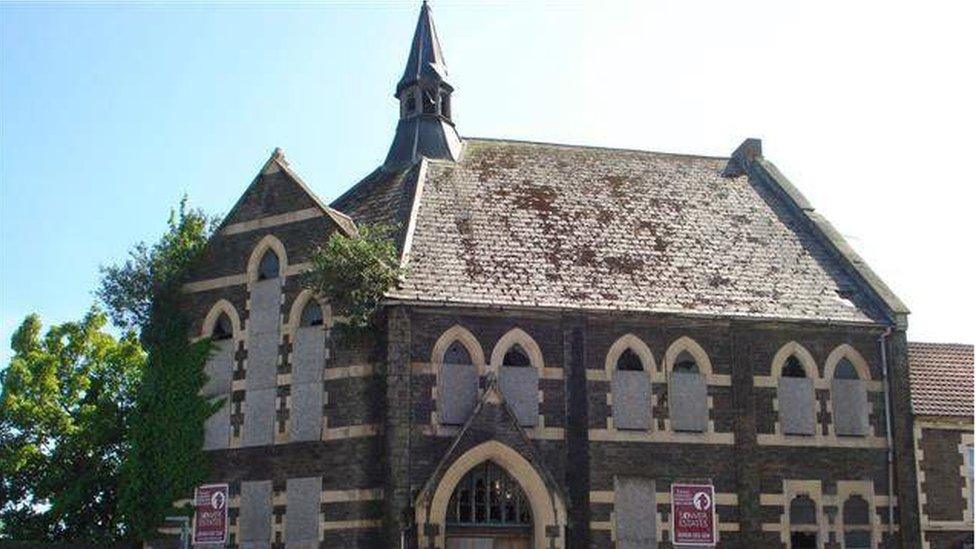
How the church on Splott Road looked in 2016
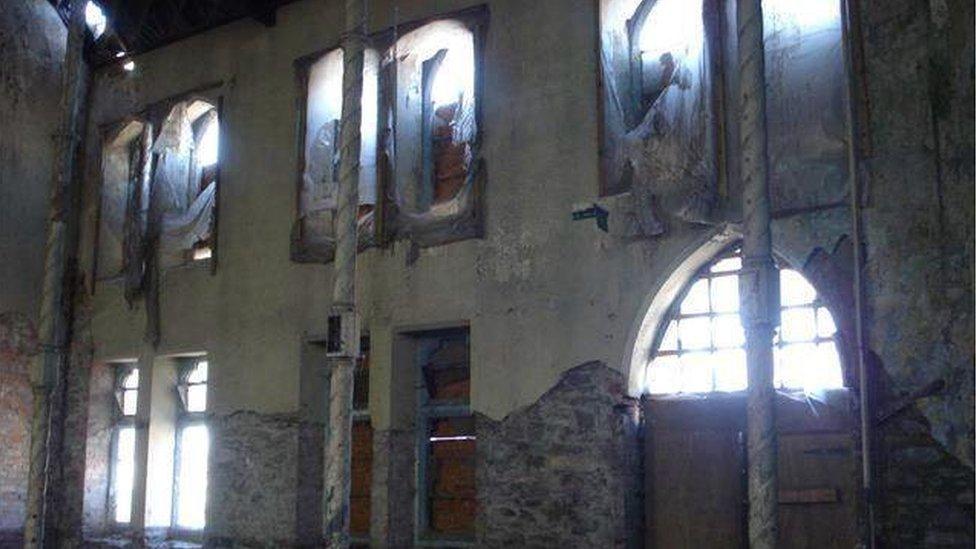
The structural report pointed to "severe structural cracking due to a lack of support"
- Published18 July 2017
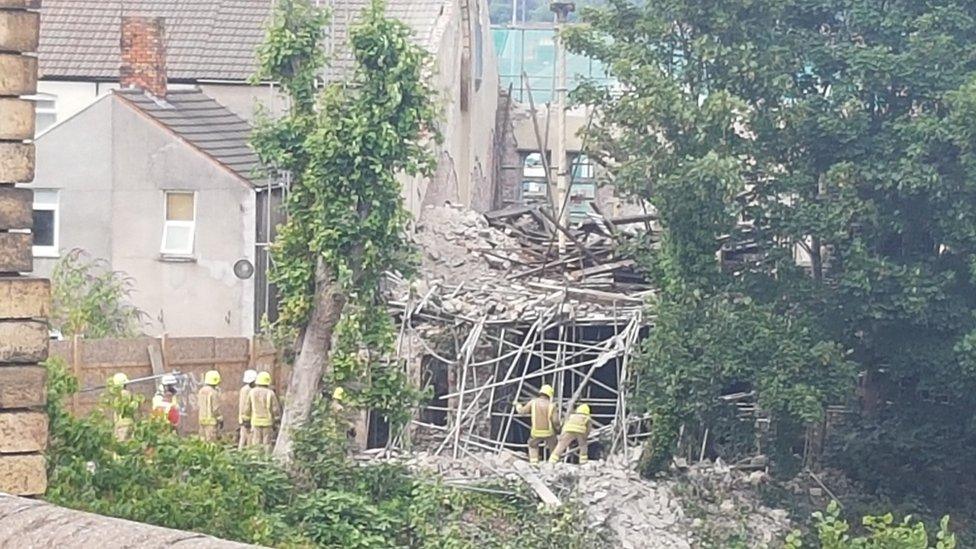
- Published18 July 2017
